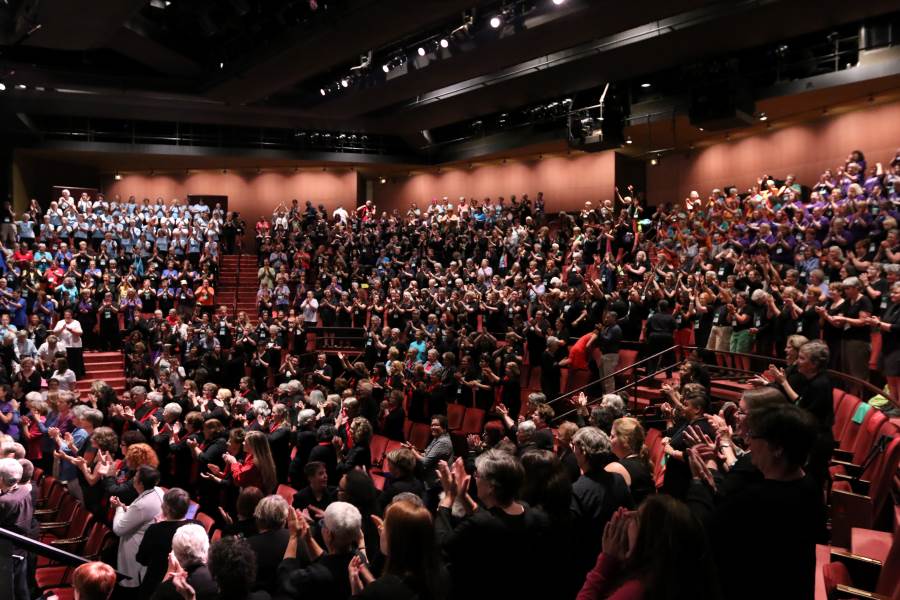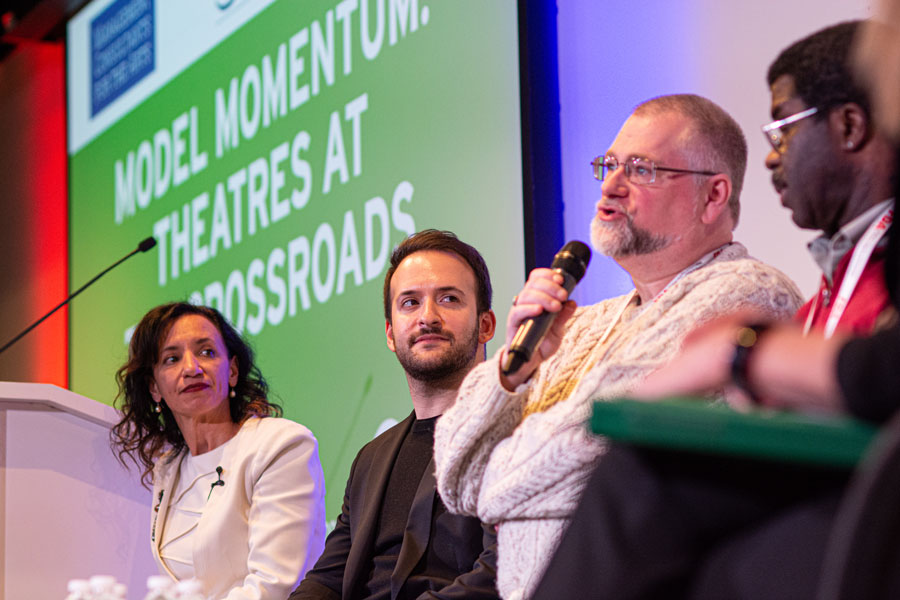We’re in a challenging moment for theatres, marked by shifting sources of financial support, growing expenses tied to high levels of inflation, and concerns about filling seats. Given this context, rebuilding audiences is a critical priority for many theatres, not only for mission-related reasons but also to rebalance earned revenue from ticket sales with contributed revenue.
Recent Cultural Data Profile (CDP) data provided to SMU DataArts by more than 100 theatres shows encouraging growth in ticket sales between 2022 and 2023, with a 28 percent increase in ticket revenue year over year. But most theatres are still working to regain the ground lost during the pandemic; 34 percent fewer audience members have returned compared to highs in 2019 (along with 44 percent fewer subscribers), so reliance on existing customers as the primary earned revenue engine of future growth is a precarious strategy that would seek to glean more money from fewer attendees.
Audience diversification offers significant opportunities to accelerate attendance growth. The future of the country is more diverse, with projections of the U.S. becoming white minority by 2045. Meanwhile, National Endowment for the Arts data shows that 84 percent of theatre attendees in 2022 were white, a proportion that hasn’t changed significantly since it was last measured in 2017. A recent city-level study of performing arts attendance done by SMU DataArts showed sizable representation gaps for companies relative to their communities, underscoring previous findings. This study compared the demographics of ticket purchasers to those of the community surrounding performing arts organizations. Representation gaps were widest for people with less than a bachelor’s degree (comprising just a third of the expected level given population). Similarly, those with incomes below $50,000 who are Latine or Black were all represented at about half the expected levels.
There’s so much room for audience growth in these areas of underrepresentation. What might it take to engage these communities? More importantly, what might it take for them to come more than once, countering the national trend of 75 percent churn in first-time single-ticket buyers? There are five key elements.
Relevance: The most recent iteration of Culture Track reported that more than half of Americans hoped arts and culture organizations would change to be more relevant to more people, a belief that’s much more common among Americans who are Black, Indigenous, or people of color (BIPOC), who now represent the U.S. population growth engine. This finding reinforces previous results showing that unappealing programming discourages attendance, and that the impression “It’s not for someone like me” remains the largest barrier to participation.
There’s so much room for audience growth in these areas of underrepresentation. What might it take to engage these communities?
What could more relevance look like? More than half of Americans (55 percent) want arts and culture organizations to become more inclusive and community-centered; this desire is 10-15 percent higher among BIPOC Americans. Specifically, the public wants greater diversity of voices and faces, a focus on local collaborations, organizations that treat employees fairly, and an effort to be friendlier to all people. It’s notable that these changes are largely about the culture, connectedness, and values of organizations rather than the kinds of content or format of the art presented. But those aspects weren’t exempt from desired changes among survey respondents: 41 percent of the public said they wanted more casual, fun, child-friendly experiences, and 29 percent wanted more reflective and innovative content.
Values alignment: Most performing arts attendees believe that ongoing work by cultural organizations toward greater equity is important (71 percent), according to WolfBrown’s research on audience attitudes about diversity, equity, and inclusion (DEI). But very few were aware of actions already taken by organizations to serve a broader public (25 percent) or to be more inclusive (27 percent). For theatres advancing DEI, it might be valuable to expand the ways that practice is shared, given the importance of this kind of values alignment.
Welcoming experiences: Ensuring a welcoming experience for all was a key priority among attendees and the general public, as seen in the WolfBrown study and in Culture Track. Key strategies for welcoming Black and Latine audiences specifically into theatres were identified in research conducted by Slover Linett with Signature Theatre. These approaches include cultivating an informal and casual environment, providing clear direction within a space to avoid attendees feeling lost or uninformed, having friendly staff at every touch point, and creating a space where someone won’t feel alone as a minority in theatre spaces.
Location: There are steep drop-offs in the likelihood of folks attending events as little as a mile away from cultural organizations. The likelihood of traveling longer distances to performing arts venues is even lower for BIPOC households and those with lower income levels. When people travel longer distances, they tend to choose venues in neighborhoods that reflect their own demographics. Many theatres have multiple permanent venues, as well as pop-up performances in communities; these strategies for reducing travel burdens are critical to consider when advancing audience growth.
Community orientation: Reflected in the extent to which arts organizations served needs through both artistic and educational work, community orientation is a critical cornerstone of financial and operational success for high-performing arts and culture organizations relative to their peers. Wallace Foundation-supported research found that to reach an accurate understanding of what constitutes meaningful work for a community, arts institutions must seek ways to participate deeply in that community by listening, learning, and building relationships over time.
This moment of change offers an opportunity for theatres to rethink how they reflect community priorities and engage audiences with even greater relevance in the future. We know that sharing cultural experiences has immense power to meet emotional, social, cognitive, expressive, and practical needs, and that it facilitates a better quality of life within a community. In this moment of change, the survival of theatre companies may depend upon their ability to be more inclusive, radically welcoming, and deeply relevant to new communities.
Dr. Jen Benoit-Bryan is research director of SMU DataArts.
Support American Theatre: a just and thriving theatre ecology begins with information for all. Please join us in this mission by joining TCG, which entitles you to copies of our quarterly print magazine and helps support a long legacy of quality nonprofit arts journalism.
Related

TCG’s Theatre Facts: Some Revenue Growth but a Drop in Assets
TCG's newest annual report of U.S. theatres' financial health, which covers 2023, shows plenty of cause for concern amid signs of resilience and promise.
In "Features"

Theatre Facts 2020 Report Shows COVID’s Initial Impact
A look at the fiscal state of the field from fall 2019 to fall 2020 shows a drop in ticket income and a spike in governmental support.
In "Nationwide"

TCG Releases Theatre Facts 2019, a Pre-Pandemic Snapshot of the Field
The study shows that U.S. nonprofit theatres were in relatively good financial shape in the year between Oct. 2018 and Sept. 2019.
In "Mid Atlantic"





